*This post may contain affiliate links. Thank you for your support.
Essential Asian Pantry Staples – The Ultimate Guide! Learn everything you need to know about the most common ingredients in Asian cuisine.
Asian cuisine is incredibly diverse, offering a rich array of flavors, textures, and colors. However, if you’re just starting out, the variety of unfamiliar ingredients can be overwhelming. Don’t worry! In this blog post, I’ll explain the most common Asian ingredients and show you where to find them, so you’re well-equipped to create delicious Asian dishes.
Soy Sauces and Other Condiments
These are the essential sauces in Asian cuisine!
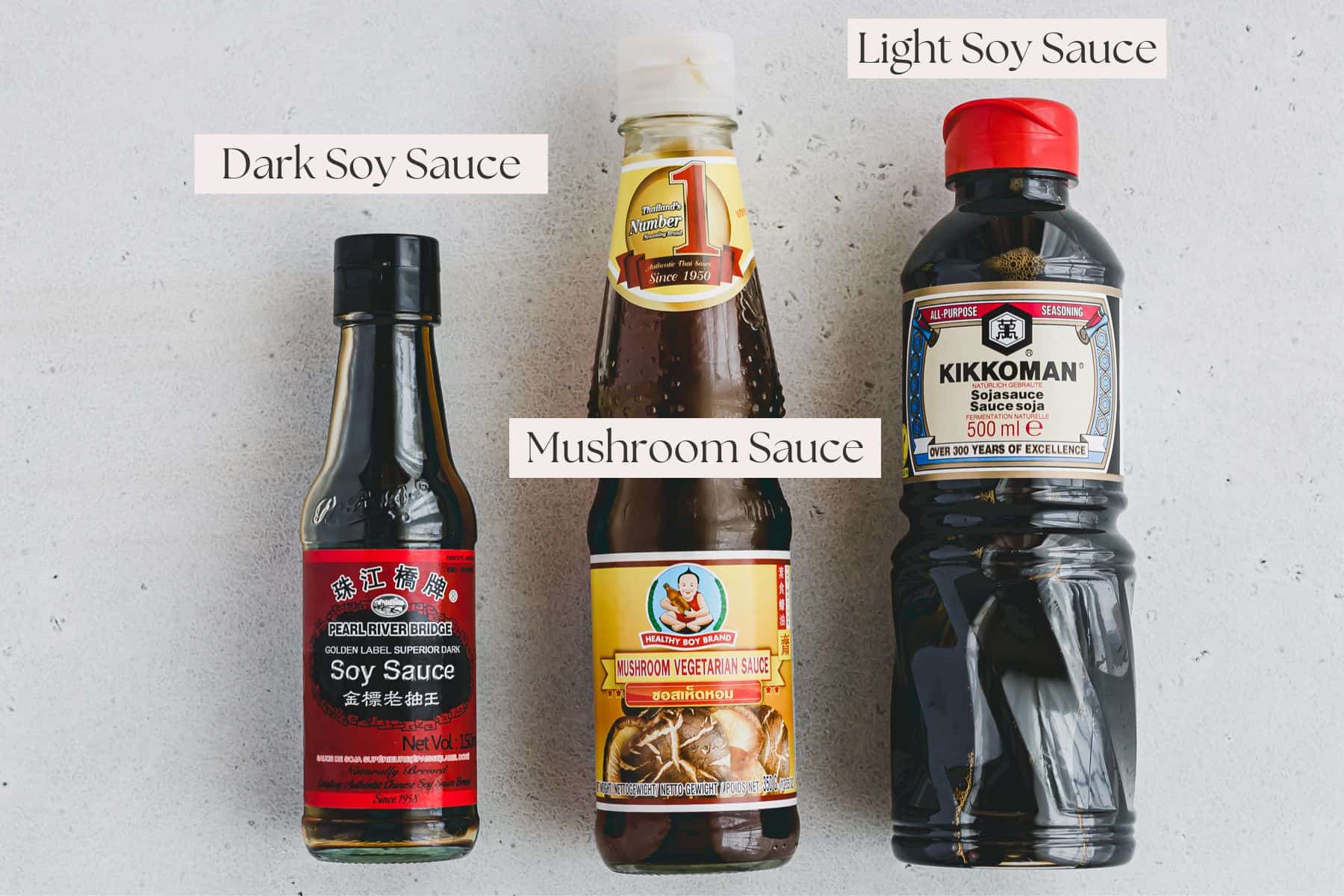
- Light Soy Sauce: Slightly salty and very versatile. When people generally refer to soy sauce, they mean the light one! There’s also a gluten-free version, called Tamari, available.
- Dark Soy Sauce: Thicker and sweeter, often used for marinades and dark sauces. Typical for “Drunken Thai Noodles.”
- Sweet Soy Sauce (Kecap Manis): A thick, syrupy soy sauce with a rich, sweet flavor, commonly used in Indonesian cuisine. It’s perfect for marinades, stir-fries, and as a dipping sauce.
- Mushroom Sauce: The vegetarian alternative to oyster sauce, popular for seasoning Asian dishes. Often called “Vegetarian Stir Fry Sauce,” it’s primarily made of soy sauce and mushroom extract.
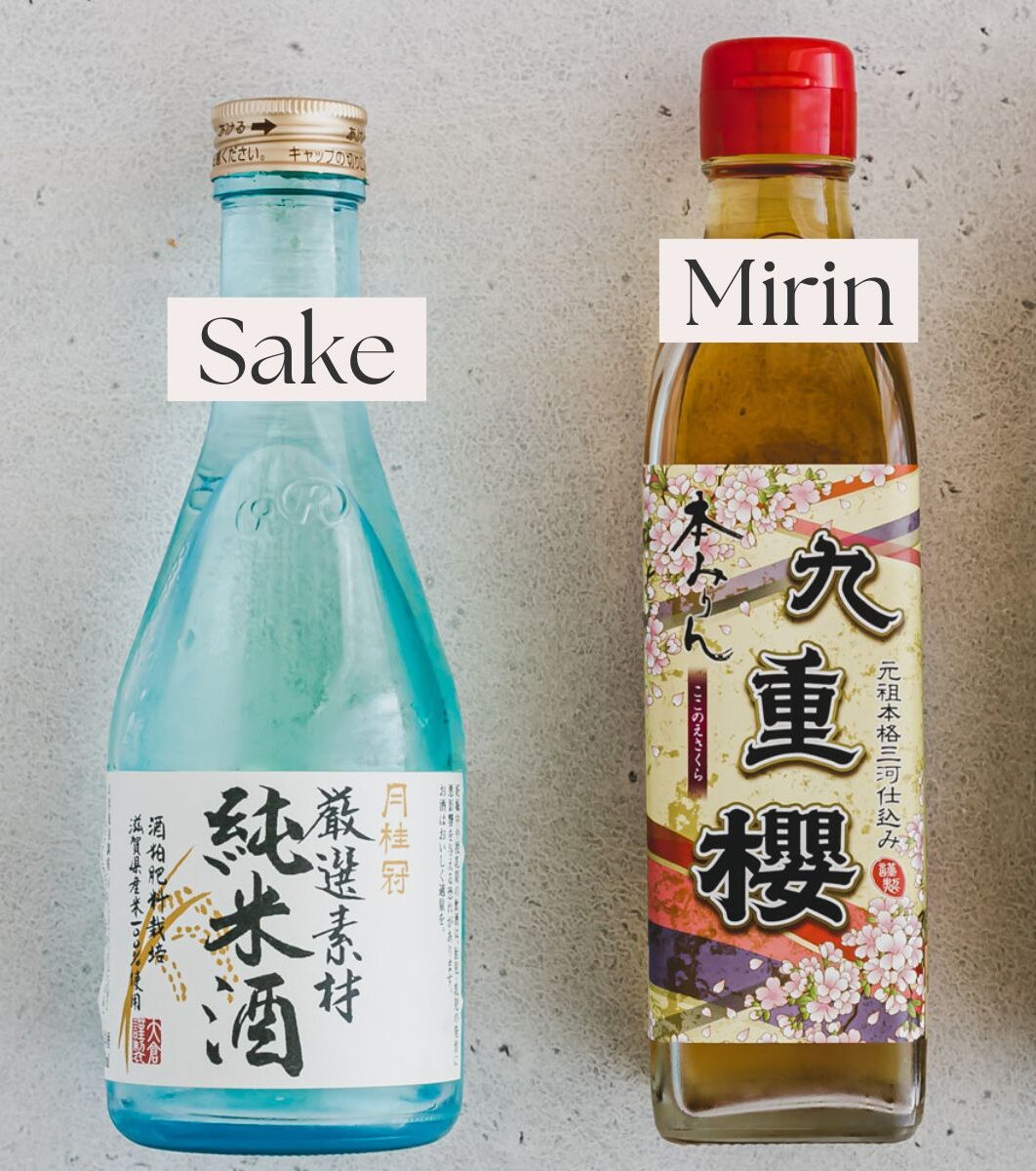
- Sake: A Japanese alcoholic beverage made from rice. Can be enjoyed straight or used for cooking. High-quality sake can be very expensive, but there is also cooking sake, which is more affordable.
- Mirin: A sweet rice wine from Japan. True mirin contains alcohol, but unfortunately, the non-alcoholic version is often sold in supermarkets. It’s worth a trip to the Asian market for the real thing.
→ Both are needed for Teriyaki Sauce or this Teriyaki Tofu!
- Fish Sauce: A salty, umami-rich sauce, mainly used in Southeast Asian cuisine. It adds umami flavor to dishes like Nuoc Cham. As a vegetarian substitute, use Vegan Fish Sauce or light soy sauce.
- Rice Vinegar: Essential in Japanese cuisine. Used to season sushi rice, miso dressing, or dips. High-quality rice vinegar is available only at Asian markets.
- Shaoxing Wine: A traditional Chinese cooking wine used for cooking, especially in marinades and stir-fries. The best substitute is dry sherry.
- Sesame Oil: Made from toasted sesame seeds, it gives dishes a deep, nutty flavor.
- Hoisin Sauce: A thick, sweet, and savory sauce, commonly used in Chinese and Vietnamese cuisine for marinades and as a dip (e.g., in Banh Mi).
- Gochujang: A spicy and sweet fermented chili paste from Korea, used in many dishes like Bibimbap and Kimchi Fried Rice.
- Tamarind Paste: Made from tamarind and tastes very sour and slightly sweet. The key ingredient in authentic Pad Thai noodles!
- Sambal Oelek & Sriracha: Garlic-infused chili pastes for seasoning and adding heat. I always have both in my fridge.
- Sweet Chili Sauce: Perfect balance between sweet and spicy. Great for dipping spring rolls or summer rolls.
- La-Yu: Japanese chili oil, delicious as a topping, pairs well with almost everything.
- Thai Curry Paste: The most common types are Green Curry Paste (the spiciest), Red Curry Paste, and Yellow Curry Paste (the mildest).
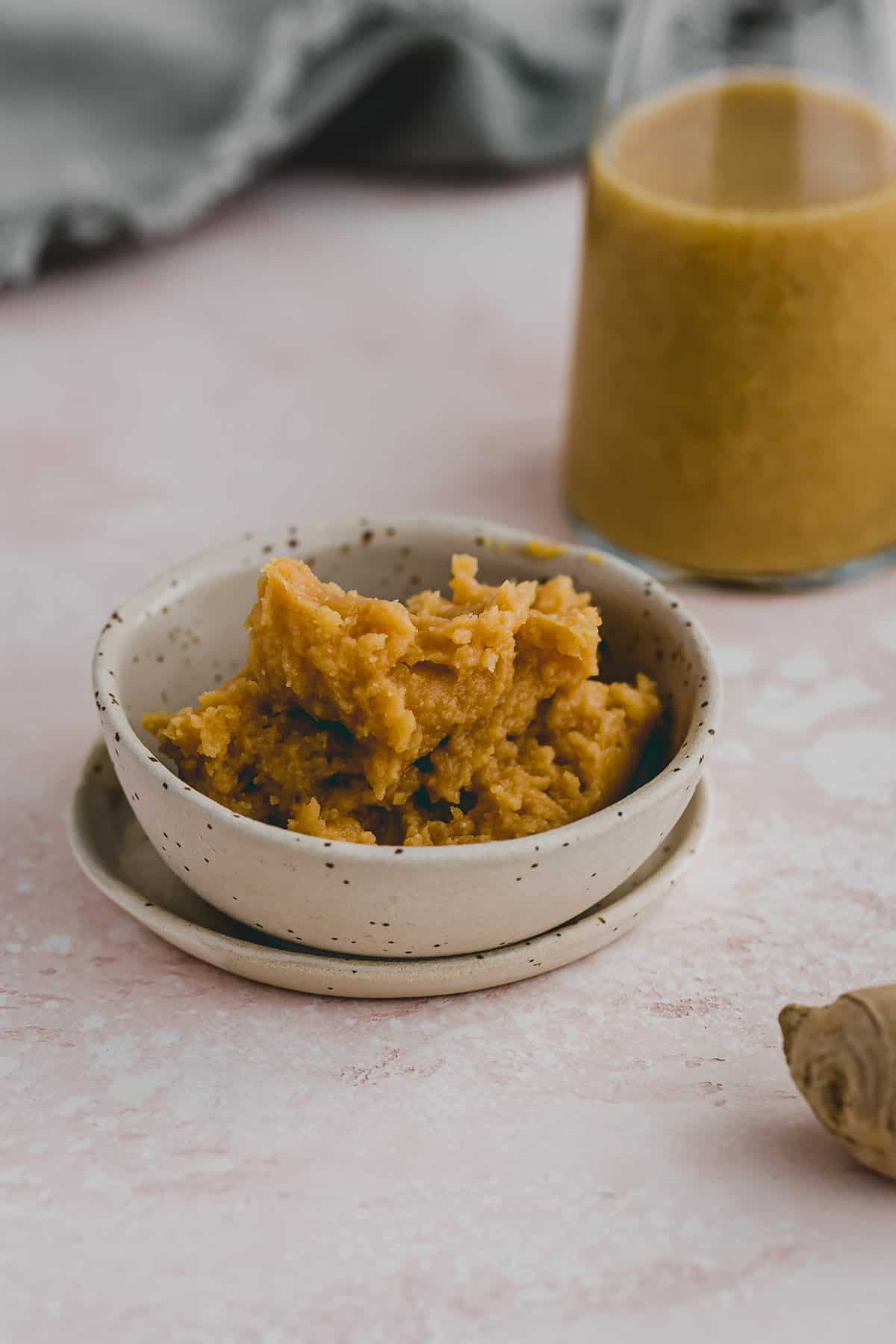
- Miso Paste: A fermented paste made from soybeans and salt, using Koji mold for fermentation. Typical in Japanese cuisine.
- Shiro Miso: White mios, the mildest form, slightly sweet, often used for miso soup.
- Aka Miso: Red miso paste, fermented longer and therefore much more flavorful.
→ When buying, make sure to check the ingredient list. A good miso paste contains only soybeans, possibly rice, salt, yeast, and Koji culture. I usually pick organic miso paste.
Noodles
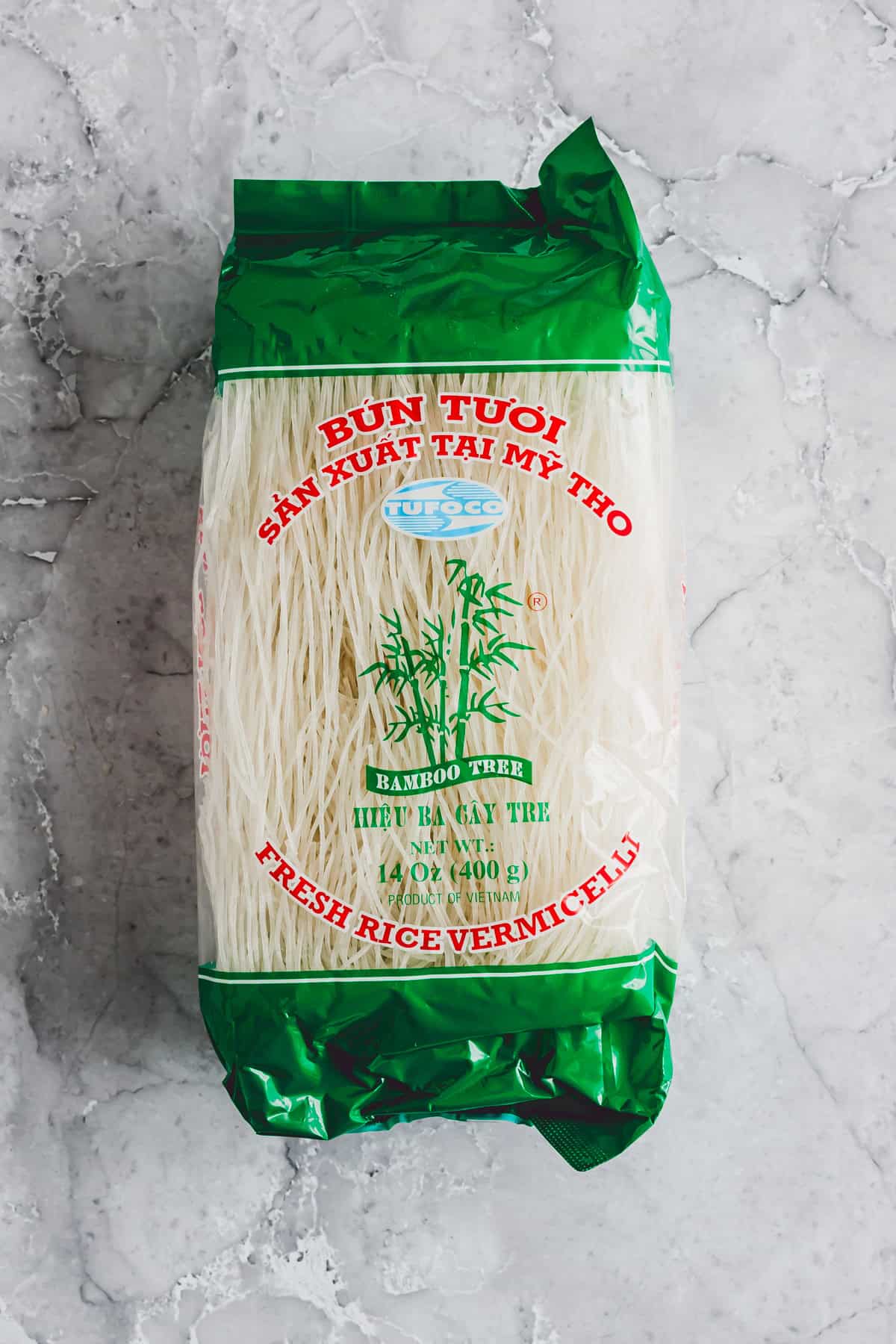
- Rice Vermicelli: Thin rice noodles, perfect for rice noodle salad or as filling for summer rolls.
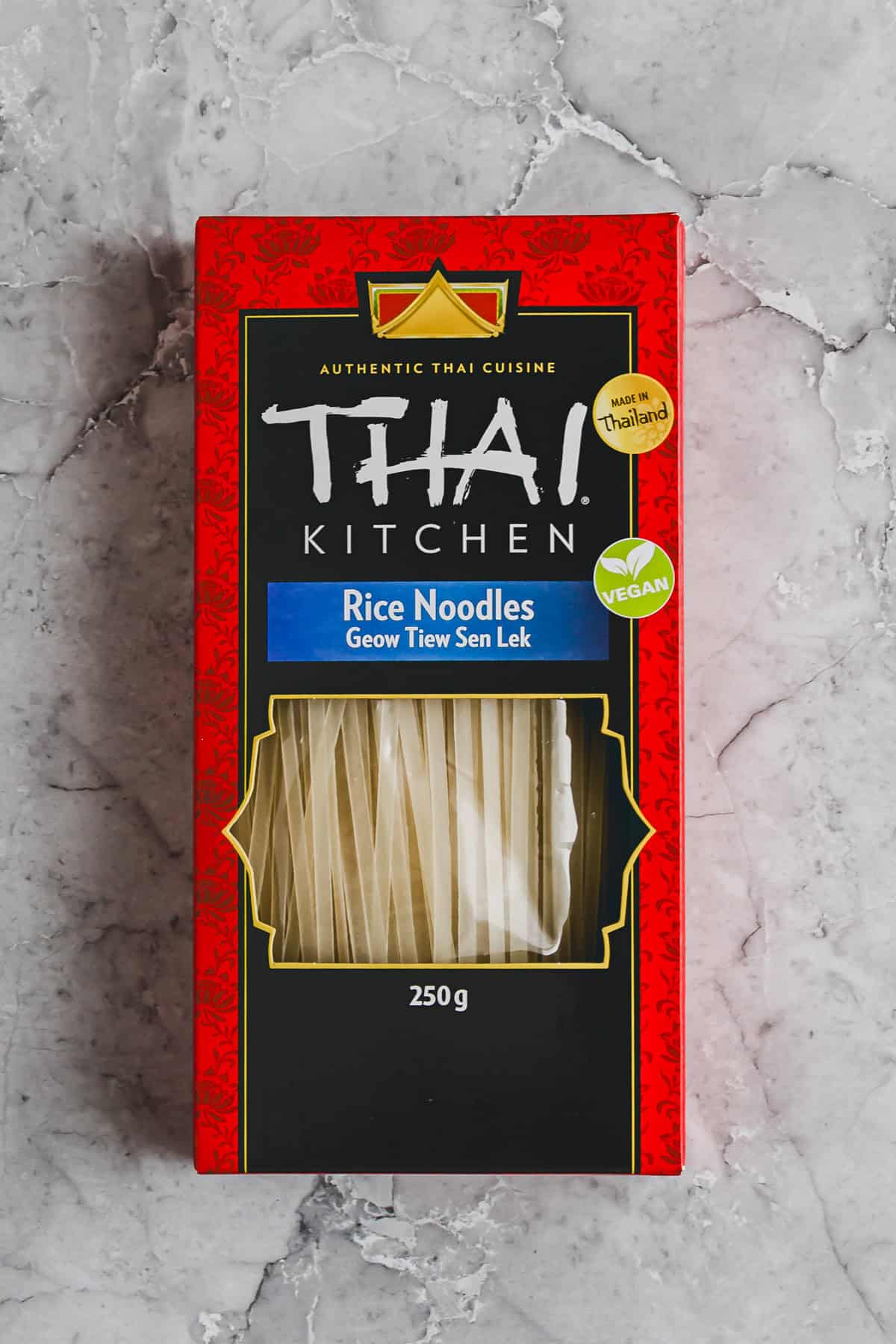
- Rice Noodles: Medium-width rice noodles, perfect for Pho or Pad Thai.
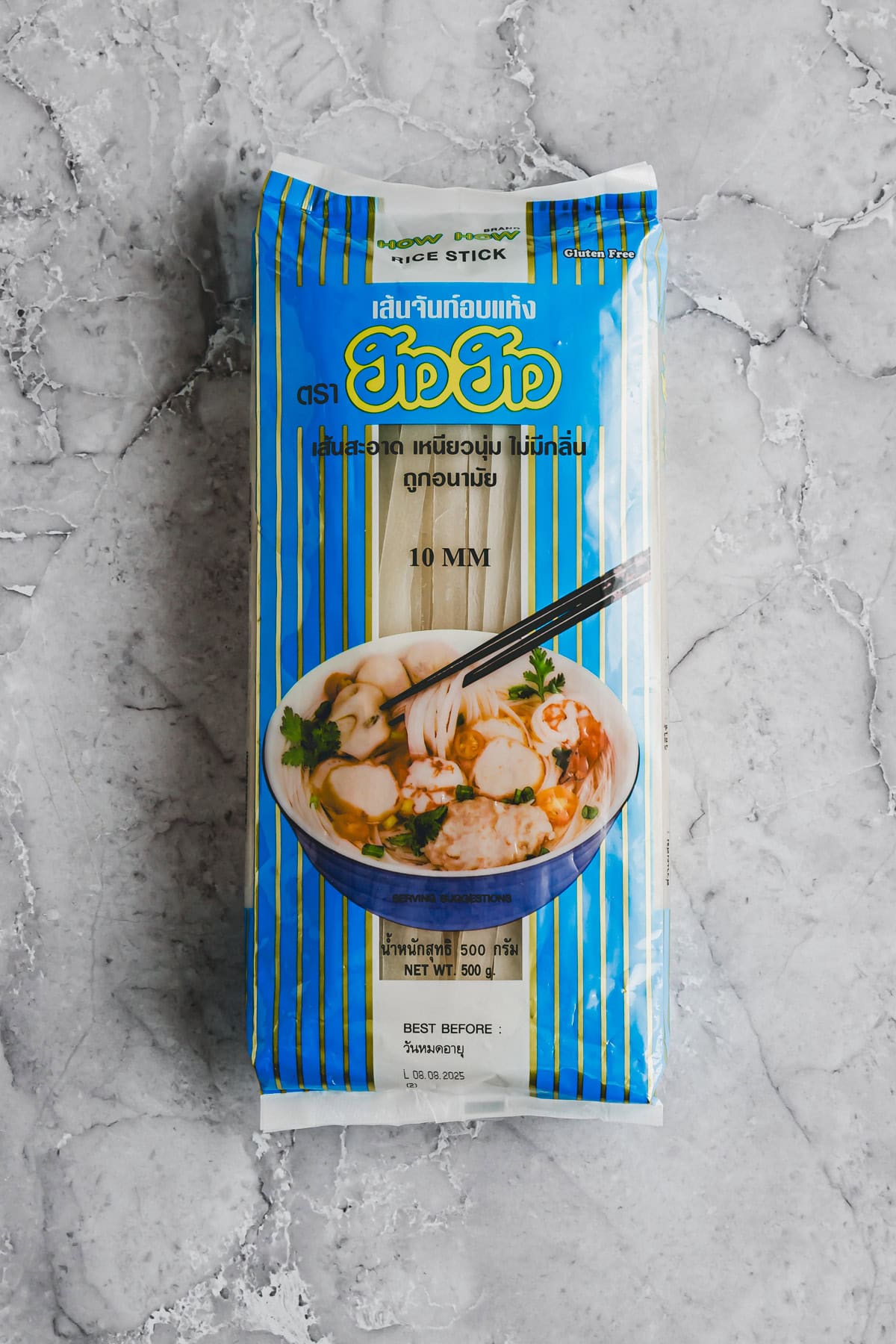
- Wide Rice Noodles: Extra wide (10mm) rice noodles, mainly used for stir-fry noodle dishes like Pad Kee Mao or Pad See Ew. They become slippery when cooked and absorb the sauce well.
Tip: You can cook rice noodles directly in hot water or soak them in cold water first. If you soak them in cold water for about 15 minutes, they stick less when cooking.
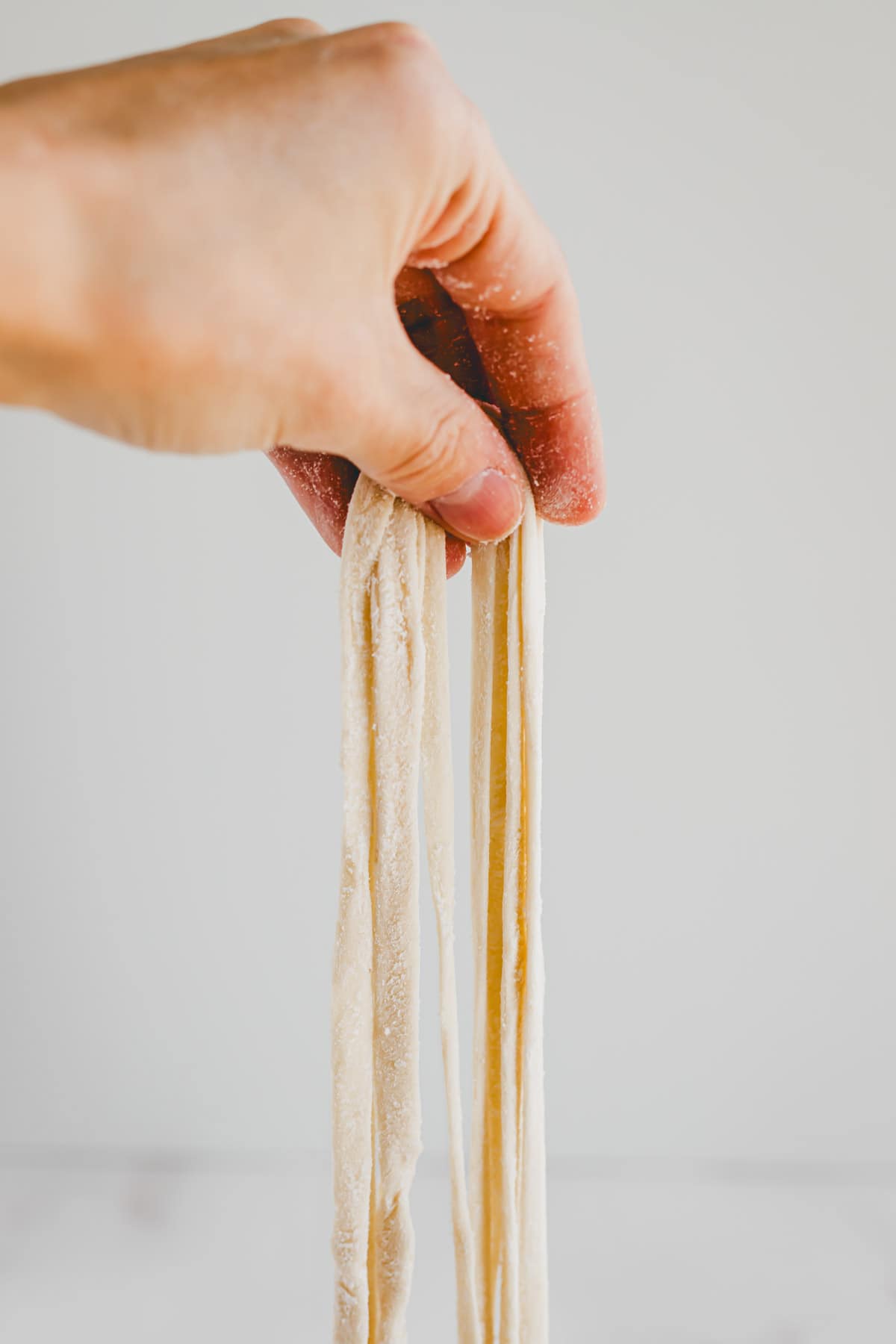
- Udon Noodles: Part of Japanese cuisine, served in stir-fry dishes like Yaki Udon and in soups. Best made fresh; here’s the recipe for Homemade Udon Noodles! You can also buy them, they are available dried and fresh.
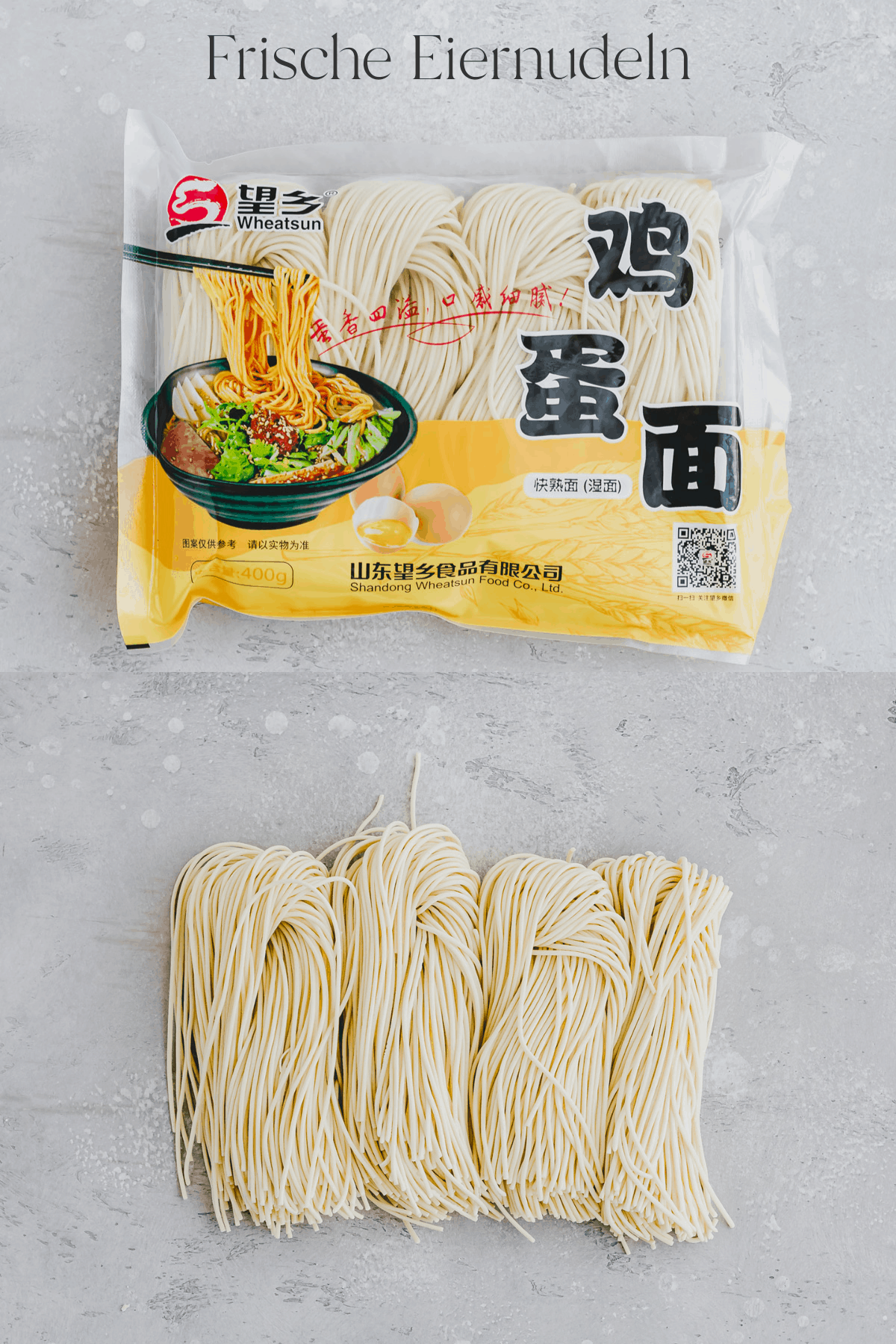
- Egg Noodles: Fresh egg noodles are available at Asian markets and taste especially delicious in Lo Mein. They can also be used for ramen. Dried noodles are available for noodle dishes, salads, or soups, with or without egg! They’re practically identical in use.
- Glass Noodles (Cellophane Noodles): Popular in Thai and Chinese cuisine. They are very light and taste best in this Thai Glass Noodle Salad or as a filling in spring rolls.
- Soba Noodles: Thin buckwheat noodles from Japan, eaten both hot and cold. A great gluten-free alternative.
Rice
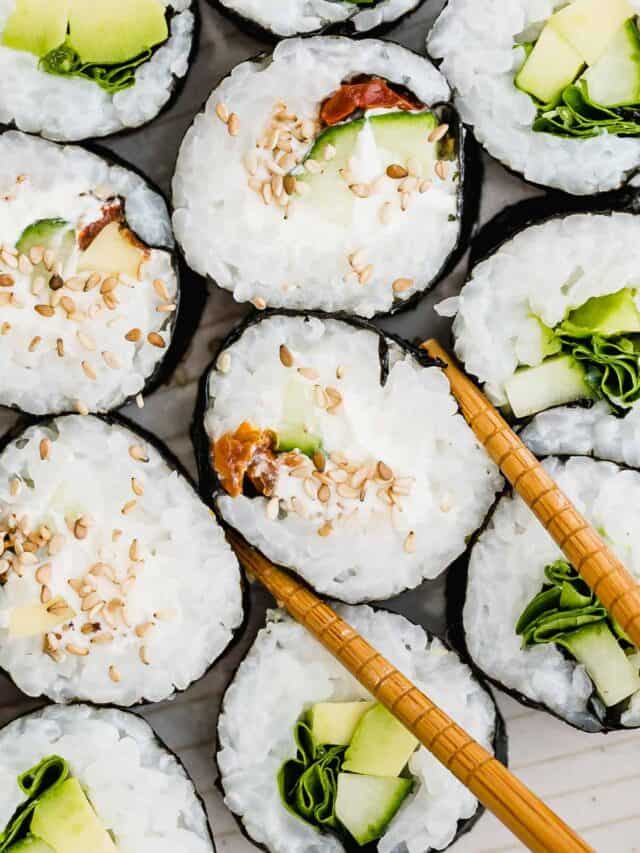
- Sushi Rice: A sticky short-grain rice from Japan, used for sushi and poke bowls. The preparation is not easy, but you can learn how to make it perfectly at home with this sushi rice recipe.
- Long Grain Rice: Jasmine rice and Basmati rice are perfect side dishes for curries or fried rice.
Tip: Asian rice is best cooked in a rice cooker. I like using a small rice cooker, which is perfect for small households (even one portion of rice turns out well). Families might prefer this larger rice cooker model.
Wrappers
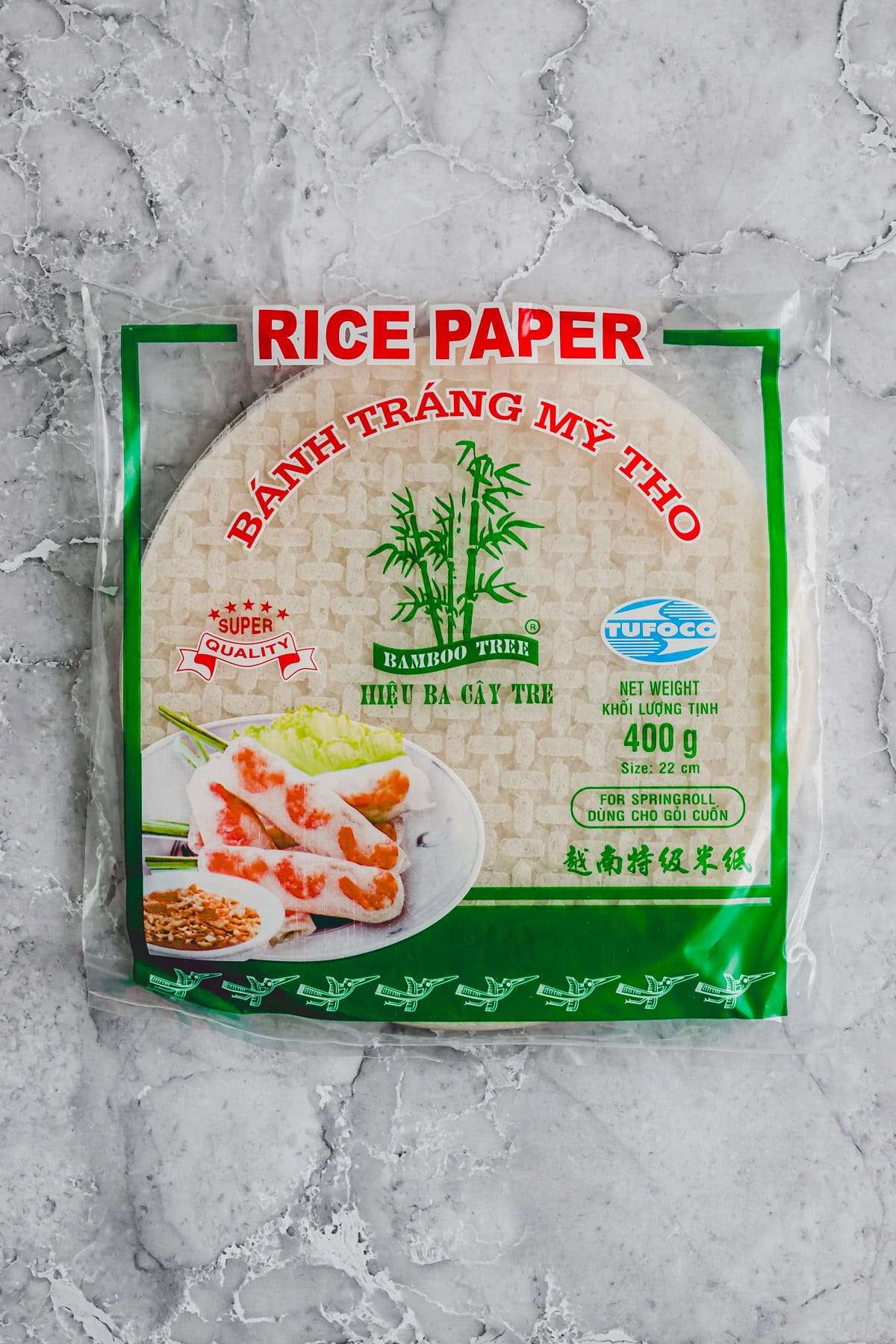
- Rice Paper: Used for summer rolls. Just briefly soak in warm or cold water and fill with vegetables, herbs, and tofu. → Available in large packs at Asian markets for a low price! 😉
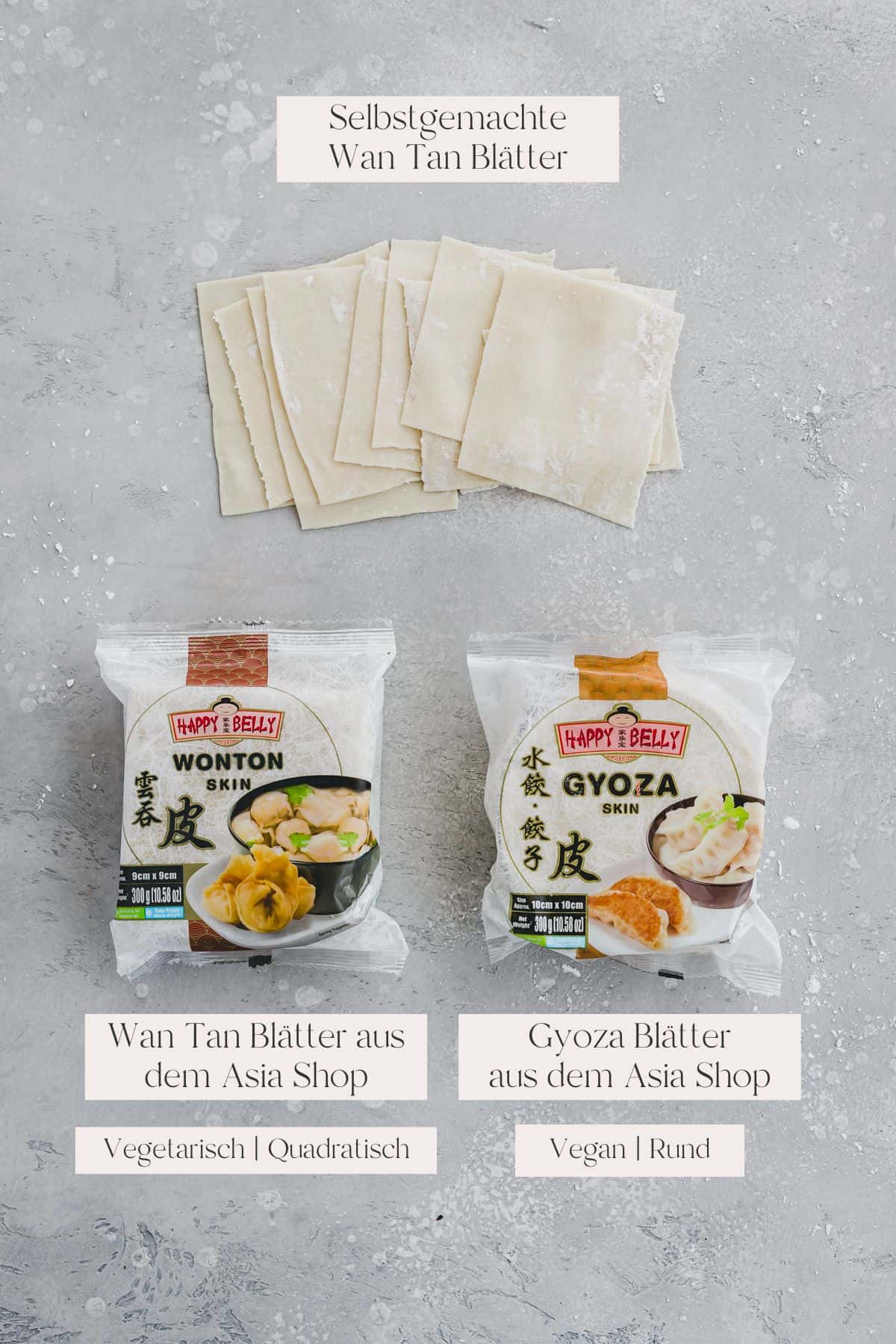
- Wonton & Gyoza Wrappers: Wonton wrappers are thin, square dough sheets made from wheat flour, water, and egg, used for stuffed dumplings (wontons) in Chinese cuisine. Gyoza wrappers are round and made without egg, used for gyoza in Japanese cuisine. Both are available frozen at Asian markets or can be made using this homemade gyoza wrapper recipe or this homemade wonton wrapper recipe.
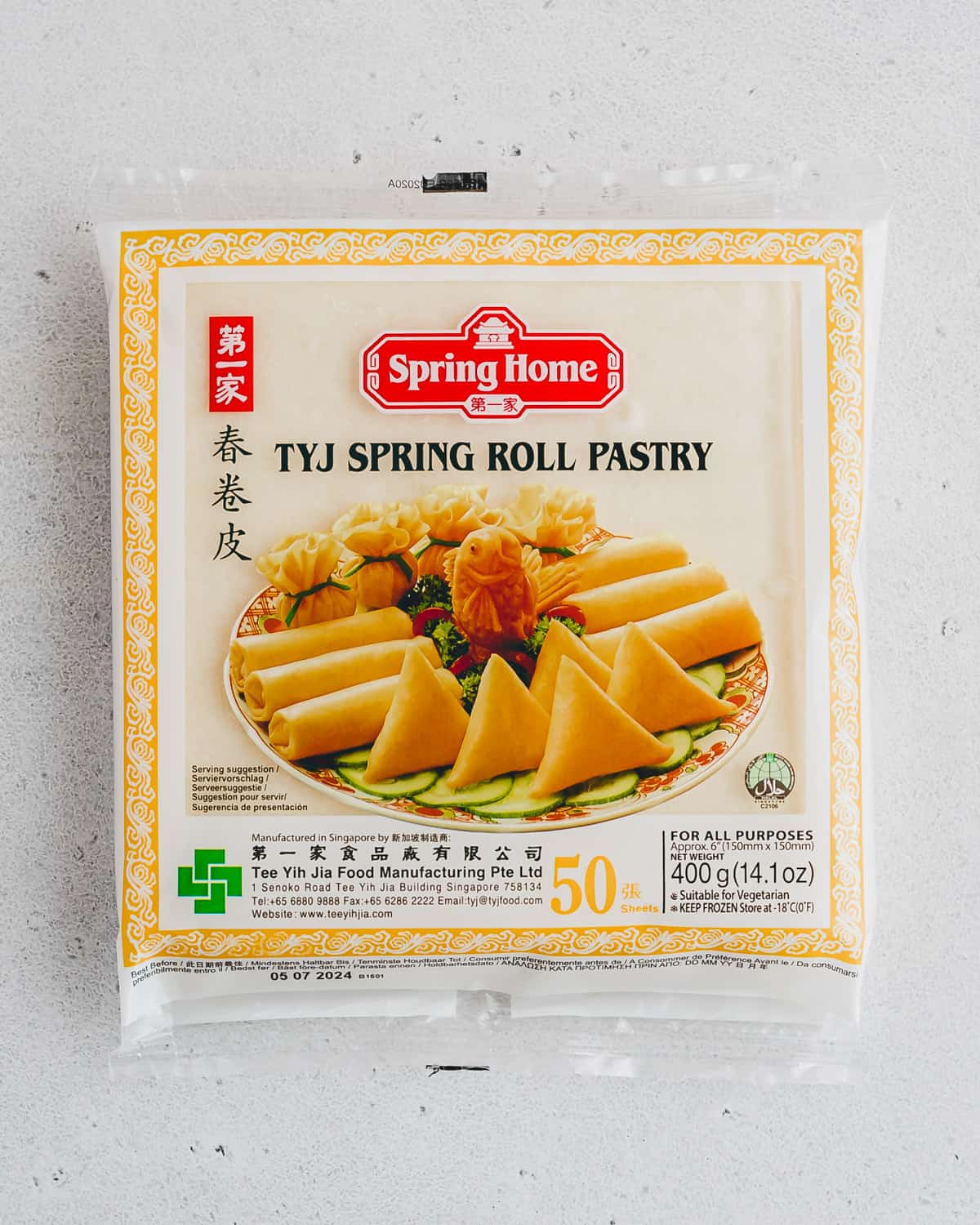
- Spring Roll Wrappers: For making spring rolls. Available in various sizes in the frozen section of any Asian market. I always use the medium size (yellow).
Pickled Vegetables, Spices, etc.
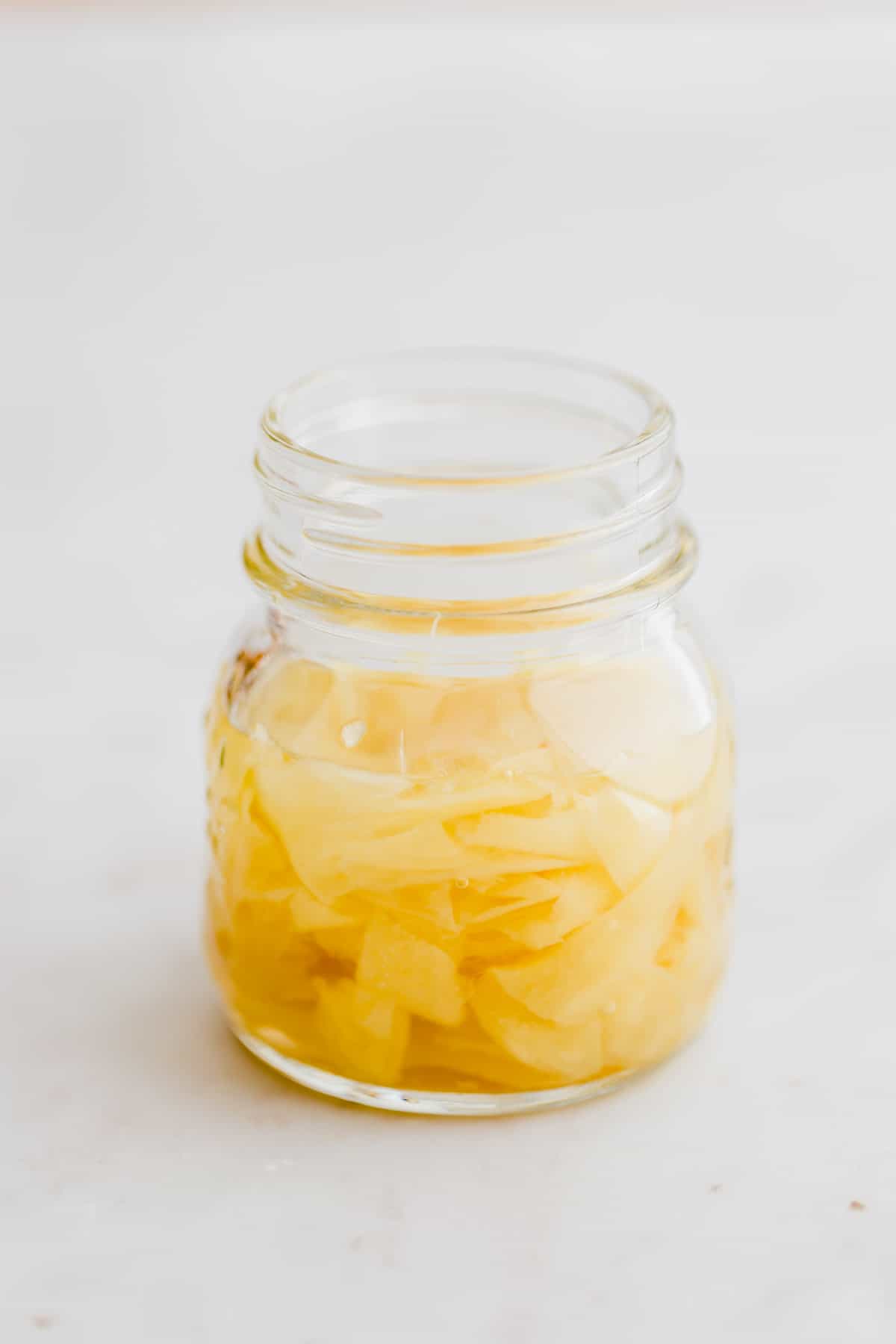
- Gari: Sushi ginger, also called Gari, is pickled ginger sliced thinly. Traditionally served as a side with sushi, it has a mild spiciness and a slightly sweet note. Best homemade with this pickled sushi ginger recipe! Sliced pink ginger (mostly available at Asian markets) is used on dishes like Yaki Soba or poke bowls.
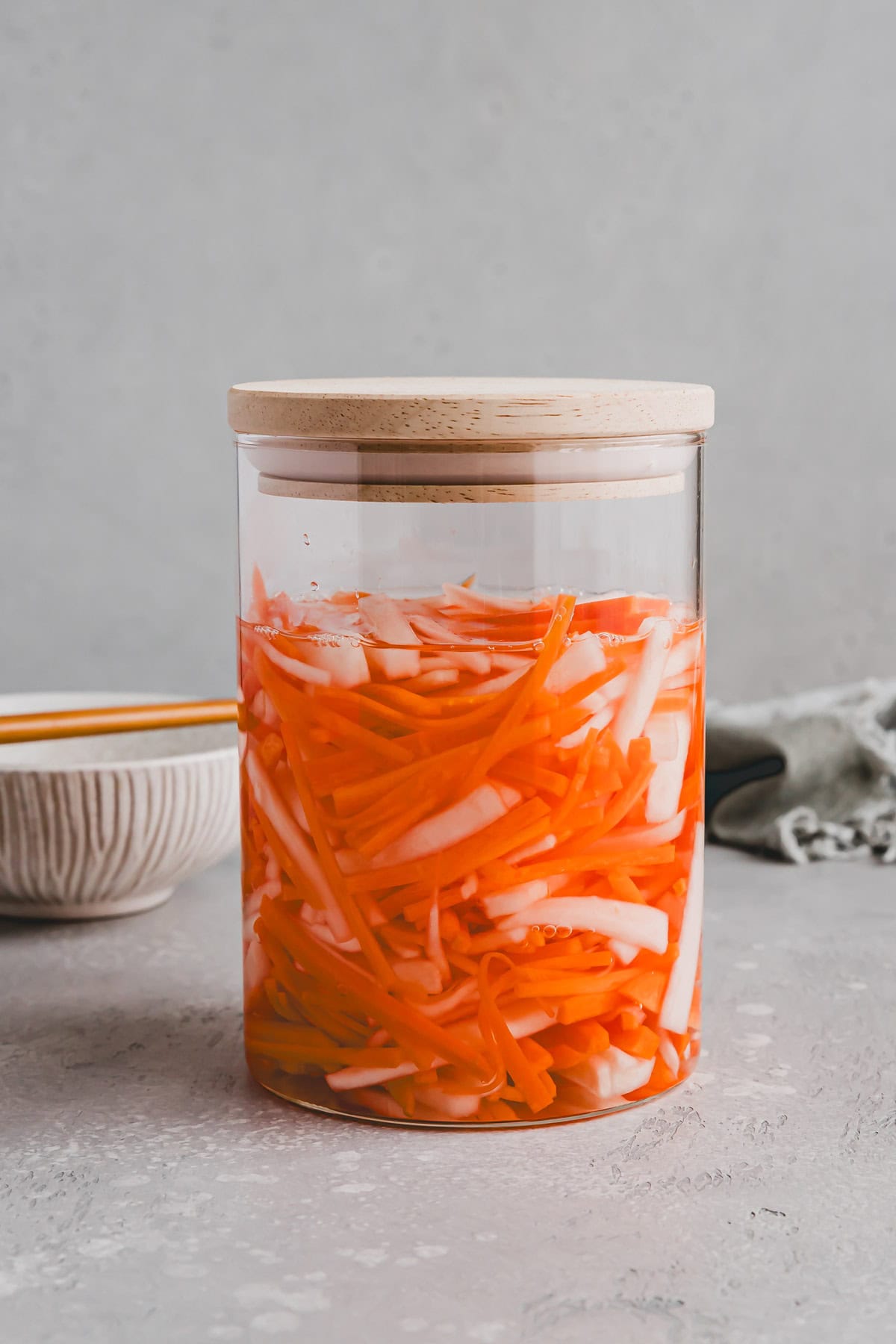
- Do Chua: Vietnamese-style pickled vegetables! These crunchy pickled carrots and daikon are a hit in Banh Mi and Bun salads!
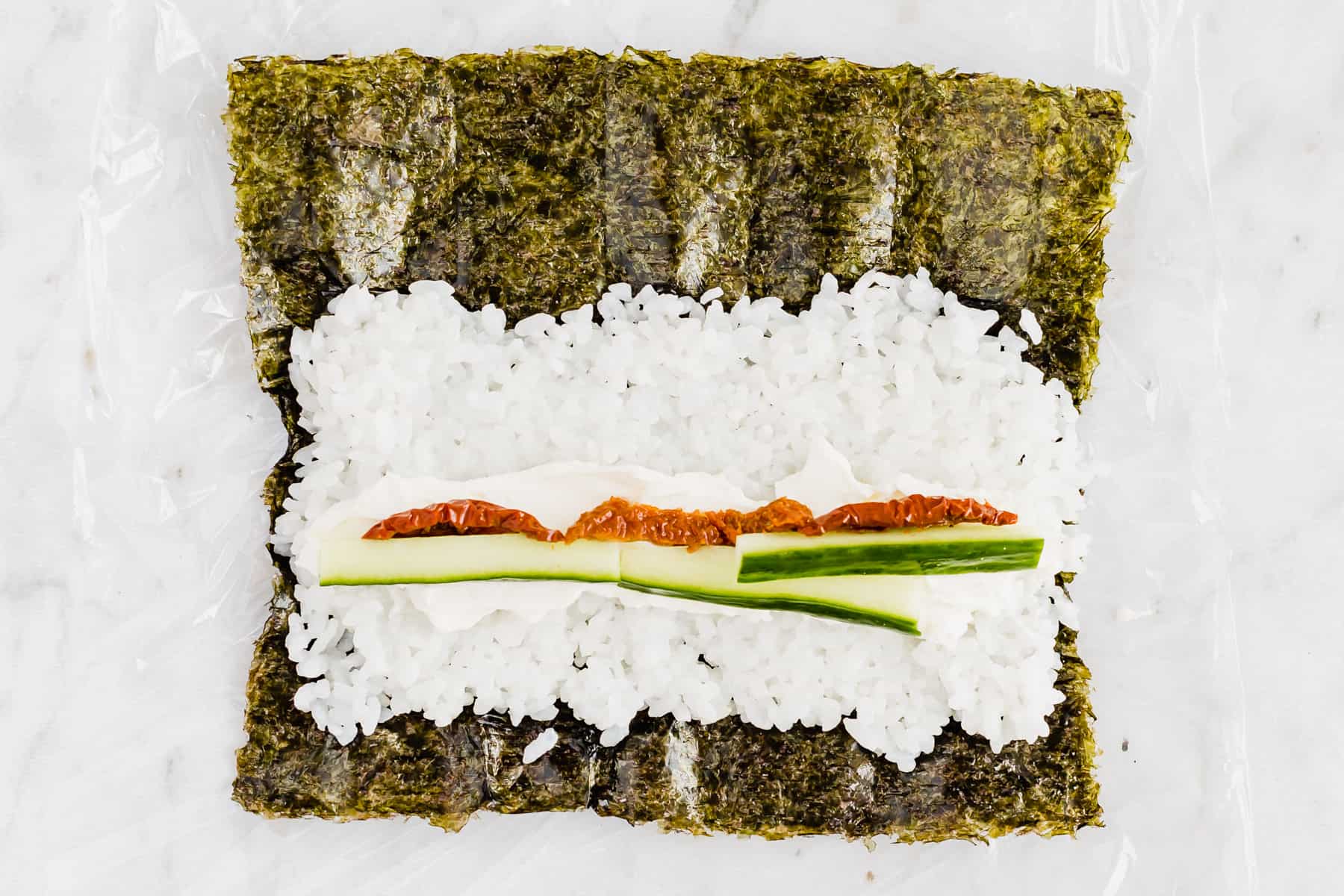
- Nori Sheets: Dried seaweed sheets, essential for making sushi. Available in large packs at Asian markets for a low price.
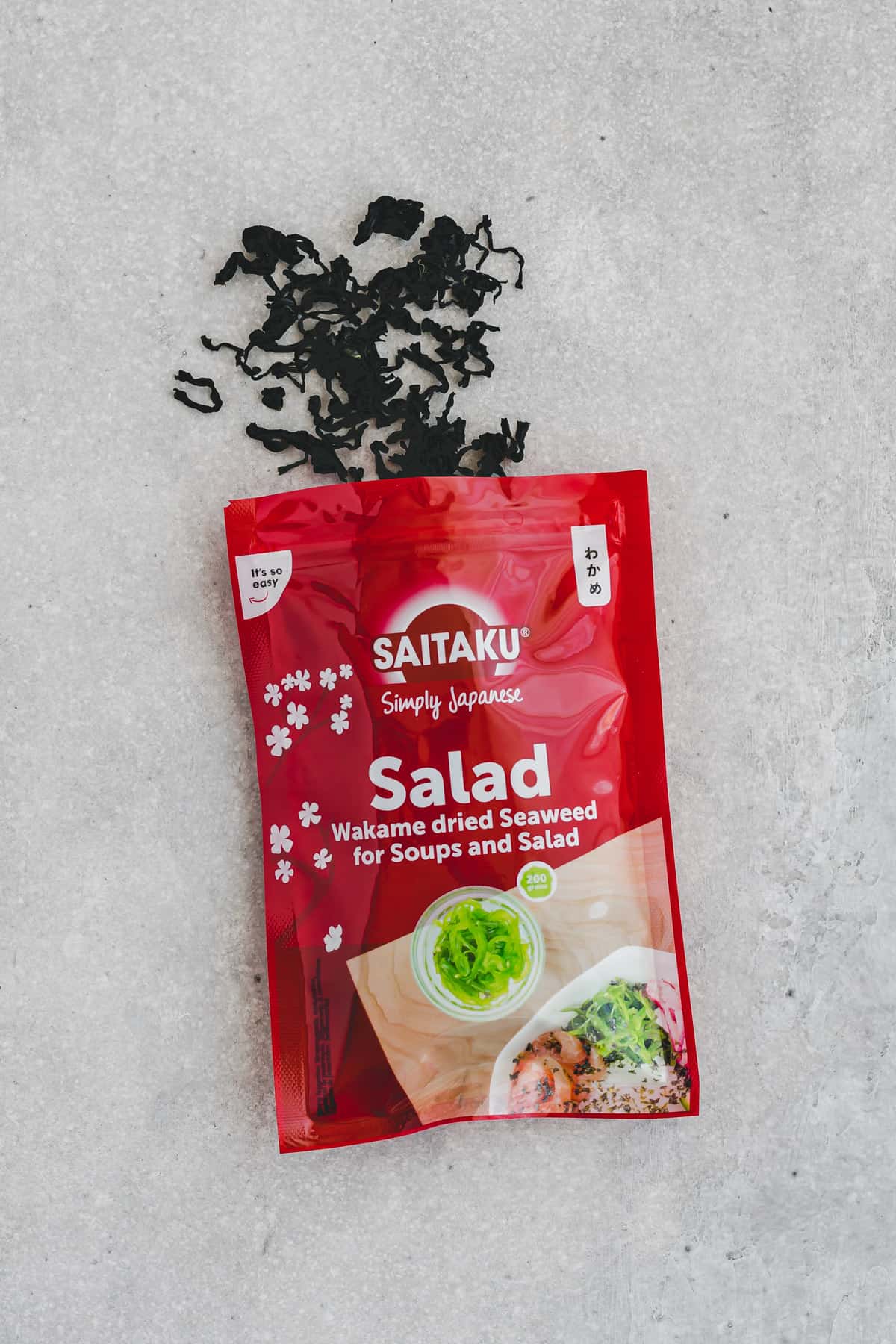
- Wakame Seaweed: An edible seaweed, low in calories and fat, full of vitamins and nutrients, and very salty. Used in miso soup and seaweed salad. Available dried (needs soaking) or sometimes fresh in the frozen section of Asian markets.
- Kimchi: A fermented vegetable, usually Napa cabbage, very popular in Korean cuisine. Kimchi is spicy, tangy, and full of probiotics. Try it in this Kimchi Fried Rice!
- Wasabi: A spicy green paste made from the root of the wasabi plant (Japanese horseradish). Available as a paste or in powder form (to be mixed with water). Real wasabi is very expensive, so it’s usually cut with horseradish.
- Shiitake Mushrooms: I always have a pack of dried shiitake mushrooms in my pantry. Soak in hot water then use for stir-fries for a rich umami flavor.
Where to Shop
- Large Grocery Stores with Asian sections or Health Food Stores
- Asian Shops or Korean/Japanese Shops
- Online (Amazon or Online Asian Markets)
Many of these ingredients are available in well-stocked grocery stores. However, the best selection and the most authentic products can be found in Asian supermarkets. There, you’ll also find more exotic ingredients and fresh vegetables often used in Asian cuisine.
Additionally, products in Asian markets are often much cheaper than in regular supermarkets. So, it’s worth the trip to an Asian market now and then, as most products have a long shelf life and can be stored well in the pantry. I personally visit every few months to restock my pantry!
If you don’t have an Asian supermarket nearby, many online shops offer Asian groceries. Even Amazon has a wide range!
Brands I Love
Making a stop at the Asian Market can sometimes be a bit overwhelming, as there are so many products and brands who might be new to you. These Asian brands are my favorites one and safe to buy. Feel free to screenshot this list before heading to a shop!
- Blue Elephant: BEST premium Thai curry paste and very yummy coconut cream.
- Kikkoman: Best Soy Sauce.
- Healthy Boy: Overall good quality sauces.
- Bamboo Tree: Best dried rice products (noodles & sheets).
- Mizkan: High-quality rice vinegar & mirin.
- Flying Goose: Only Sriracha I buy.
- Lee Kum Kee: Essential Chinese pantry staples sauces and condiments.
- Thai Kitchen: Overall quality Thai products.
- Sempio: Quality Korean products.
The Best Asian Shops in Switzerland
- YumiHana: My favorite in Basel, Bern & Zurich, very high quality, Korean & Japanese, a bit pricey.
- Lian Hua: Typical Asian shop in Zurich.
- New Asia Market: Best Asian shop in Basel, also in Zurich.
- Aggarwal: ndian market in Basel, with great fresh vegetables.
- Nishi: A small Japanese shop in Zurich with very high-quality but expensive products, also offers beautiful tableware & accessories.
Unfortunately, I can’t make recommendations for other countries, but a quick Google search in your area should help you find a good store! 🙏

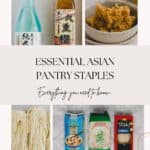
Comments
No Comments